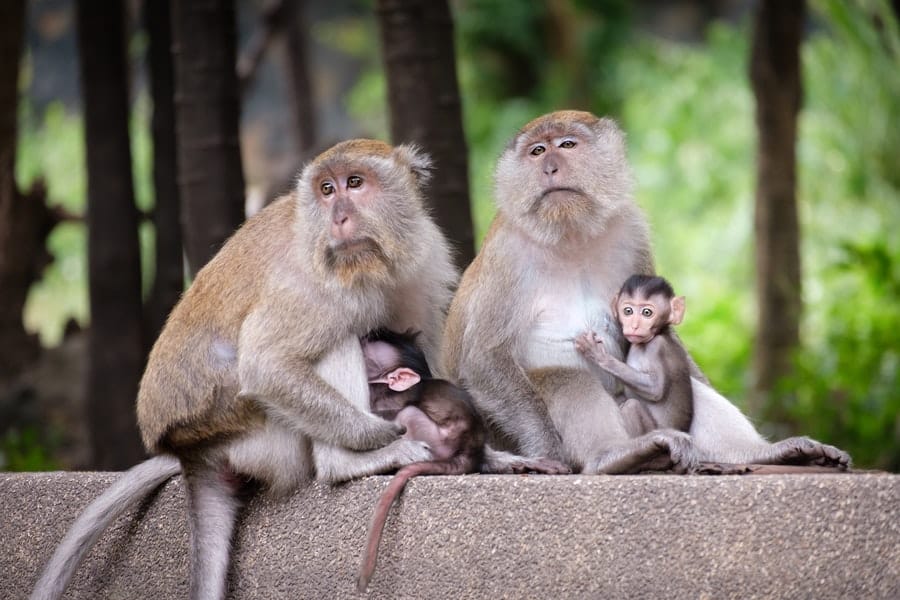Monkeys are among the most social animals on the planet. In fact, many species of monkeys live in groups where every member plays an important role. Because of this, many different behaviors have developed as a way for these animals to work together and support each other. One of the most interesting behaviors is called “prolonged impending” or dragging one’s babies from time to time. Why do some monkeys drag their babies? Let’s find out!
Why Do Monkeys Drag Their Babies?
There are many different theories about why a monkey will carry its infant. Many scientists believe that the males of the species are simply more aggressive and so are more likely to defend their own young from other males. Others believe that the male monkeys carry their infants to protect them from predators and other dangers. They also believe that carrying the infant is an act of sexual attraction, showing the mother’s mate that she is able to care for her young and therefore can be a good mate.
How Do Adults Drag Their Babies?
- An adult monkey will grab its baby by the arms or armpits. The baby will be almost on the ground when it is grabbed.
- The mother may drag the baby around for a few minutes before putting it down.
- Babies are usually dragged by their arms and legs, but they can also be dragged by their armpits and head (when they’re sleeping).
- Monkeys use dragging to move babies out of danger, bring them food or keep them warm.
- Adult monkeys often drag babies between trees or other obstacles to block their path if there is a threat nearby.
- Adult monkeys might drag babies over small distances – a few feet at most – to take them out of danger, but they don’t usually carry them very far away from their group.
- Monkeys usually drag their babies in the same area, but they might drag them to another part of the forest if there is a better food source nearby.
- If you watch a monkey dragging her baby, she may not move it very far before putting it down.
- Monkeys drag their babies to keep them safe while they go off to look for food. If a monkey sees a dangerous animal, she will drag her baby to a safer place.
- Monkeys drag their babies over very short distances, usually between trees or around obstacles like rocks or logs. They don’t usually carry them very far away from their group, but they might drag them over long distances if they want to take them out of danger or bring them food.
- Monkeys may also use dragging to put their babies down and teach them something new about the group.
- Monkey mom-guarding is thought to be an important way for mothers and infants to stay together during foraging trips when the mother must leave her infant alone for long periods of time, or when she is away from the group in another part of the forest looking for food with other adults and juveniles in the group (called dispersal).
- It’s not just impending danger that makes adult monkeys do this – it’s any type of danger that might threaten the infant during its stay in the forest (like being eaten by a predator).
- A baby stays close to its mother while it is being carried because it may fall off if it is not held securely by its mother at all times during its stay in the forest with her other members of the group (dispersed). This means that adult monkeys often carry their babies while they are in a tree or some other object, but they don’t usually carry them very far away from their group.
Can Babies Survive Being Dragged By Their Mother?
- Chances of survival are low for a baby monkey if the mother drags them for more than 10 minutes. The baby will quickly get cold, and their lungs won’t be able to take in air.
- Babies who are dragged around for more than 10 minutes may become very weak or even die from exhaustion.
- Baby monkeys who are dragged around for more than 30 minutes will probably not survive at all. Their brains and organs can’t handle the stress of being dragged around by their mother!
- If a baby monkey does survive being dragged around for more than 30 minutes, it may have a lot of problems. They may have trouble walking, or they may be unable to stand up or even crawl.
- It’s very dangerous for a baby monkey to be dragged around for more than 60 minutes. If the mother drags them for that long, the babies can actually die from exhaustion.
- If a baby is dragged around for more than an hour, it may become permanently disabled.
- Babies are at risk of being injured if they are dragged around for more than 90 minutes.
- The most important thing to remember is that mothers should never drag their babies around for more than 1 hour!
- If a mother drags her babies around for more than 1 hour, they can actually die from exhaustion.
- Babies are at risk of being injured if they are dragged around for more than 2 hours!
- A mother should never drag her babies around for more than 2 hours!
- If a mother does drag her babies around for longer than 2 hours, they may die from exhaustion!
Bottom line
Monkeys are social animals, and this means that they often have to work together. Adult monkeys use guarding behaviors to protect their babies from danger. While guarding, they may drag their babies around to move them to a safer spot or bring them food. Babies can even survive being dragged for a short time as long as it isn’t prolonged. This behavior is not intended to be harmful.
